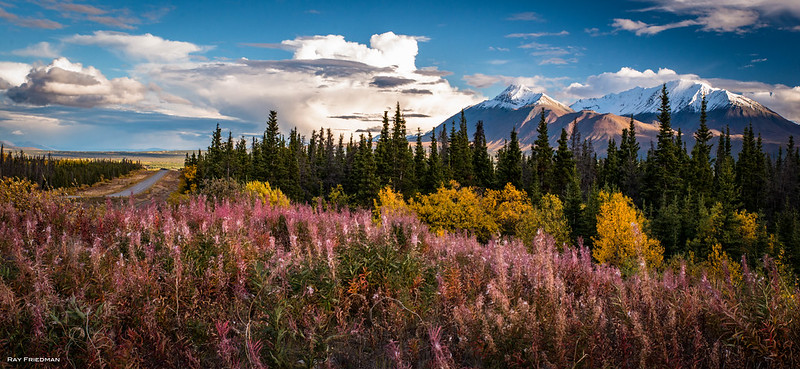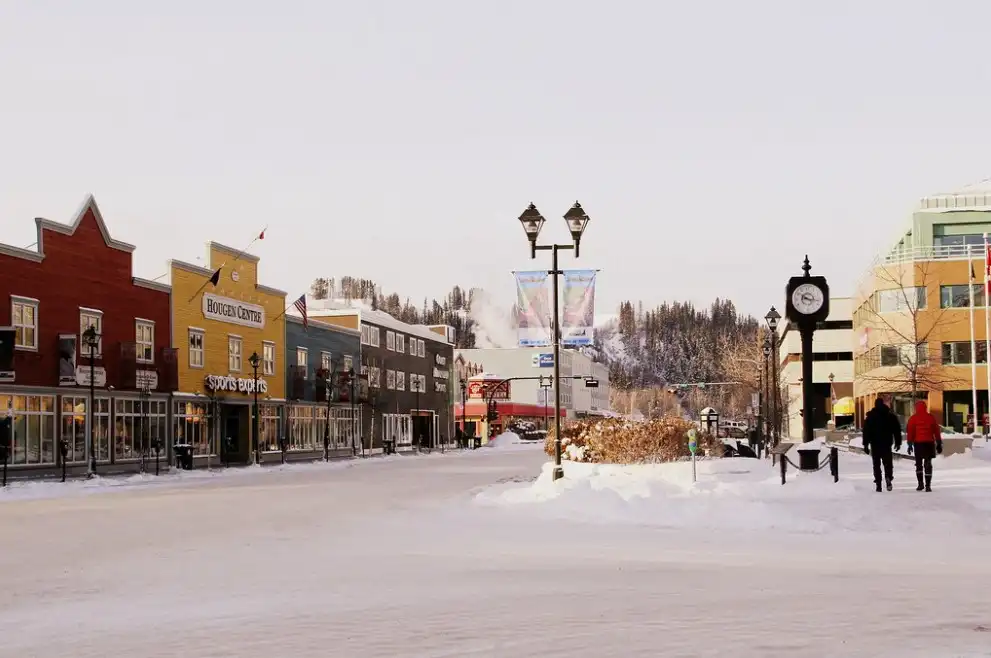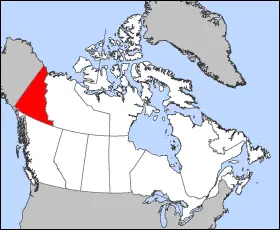The Yukon, a territory in northwestern Canada, is a place of awe-inspiring natural beauty and rich cultural heritage. Known for its rugged landscapes, it offers many experiences for those who love the great outdoors and history. Whether you’re an adventurer at heart or want to explore this fascinating region’s culture and history, the Yukon has something for everyone.
Where is the Yukon Located?
The Yukon is a territory in the northwestern part of Canada, situated between 60° and 69°N latitude and 129° and 141°W longitude. The U.S. state of Alaska borders it to the west, the Northwest Territories to the east, and British Columbia to the south. The Arctic Ocean lies to the north, providing Yukon with a northern coastline along the Beaufort Sea. Covering an area of 482,443 square kilometers, Yukon is the smallest of Canada’s three federal territories. The territory’s capital is Whitehorse, located at approximately 60.7213° N, 135.0568° W. The Yukon River, one of the major waterways, flows through the territory, further shaping its geography.
Geographic Location and Size
Situated in the northern part of Canada, the Yukon covers an area of about 482,443 square kilometers. It shares its borders with Alaska to the west, British Columbia to the south, and the Beaufort Sea to the north. The territory is a paradise for nature lovers, featuring a variety of landscapes, from mountains and tundras to lakes and rivers. The Yukon River, one of the most significant rivers in North America, flows through the territory, and Mount Logan, Canada’s highest peak, towers over the landscape. The Yukon’s location near the Arctic Circle allows for phenomena like the Northern Lights and the Midnight Sun, making it a unique destination for travelers.
Weather in the Yukon
Embrace the Seasons: A Guide to Yukon’s Weather
The Yukon Territory is a land of extreme beauty and equally extreme weather. From the vibrant hues of autumn to the icy chill of winter, each season offers its own unique experiences. Here’s what you can expect from the weather in the Yukon throughout the year.
Seasonal Facts/Trends in Yukon
| Season | Months | Daylight Hours | Temperature Range (°C) | Temperature Range (°F) | Key Features & Activities |
|---|---|---|---|---|---|
| Autumn | September – October | 9 – 13 hours | -3°C to 19°C | 26.6°F to 66.2°F | Bright foliage, northern lights, hiking, flightseeing |
| Winter | November – March | 5 – 11 hours | -40°C to -13°C | -40°F to 8.6°F | Skiing, mushing, hot springs, northern lights viewing |
| Spring | April – May | 12 – 16 hours | 5°C to 15°C | 41°F to 59°F | Late-season skiing, migratory birds, blooming crocuses |
| Summer | June – August | 18 – 22 hours | 6°C to 26°C | 42.8°F to 78.8°F | Midnight sun, flightseeing, fishing, mountain biking |
Autumn: A Symphony of Colors
Autumn in the Yukon is a visual treat. The landscape bursts into a riot of colors, from the bright oranges and yellows of the leaves to the mystical blues and greens of the northern lights. The temperature ranges from -3°C to 19°C, and daylight lasts between 9 and 13 hours. This is the perfect time for hiking and flightseeing, as the Yukon’s natural beauty is on full display.
Winter: The Cold and the Beautiful
Winter in the Yukon is not for the faint of heart. With temperatures plummeting to as low as -40°C, you’ll need to bundle up. However, the cold weather makes the Yukon one of the best winter destinations on the planet. Daylight is limited to 5-11 hours, but the long, dark nights provide the perfect backdrop for the northern lights. Activities like skiing, mushing, and soaking in hot springs are popular during this season.
Spring: A Season of Renewal
Spring in the Yukon is a time of awakening. As the temperature rises to a more comfortable range of 5°C to 15°C, the landscape comes alive. Migratory birds return, crocuses bloom, and bear cubs emerge from their dens. With 12 to 16 hours of daylight, you’ll have plenty of time for late-season skiing or even a quick dip in a lake after the ice melts.
Summer: The Land of the Midnight Sun
Summer in the Yukon is like no other. With up to 22 hours of daylight, you’ll have ample time to explore. Temperatures can reach up to 26°C, making it ideal for outdoor activities like flightseeing, fishing, and mountain biking. And if you’re lucky, you might even spot some of the Yukon’s larger residents, like moose and bears, foraging near rivers.
History and Culture of the Yukon
The Yukon has a rich and diverse history, shaped by its Indigenous peoples and the Klondike Gold Rush. The First Nations communities have lived in the region for thousands of years and continue contributing to its cultural richness. The discovery of gold in 1896 led to an influx of prospectors and settlers, adding another layer to its cultural tapestry. Today, the Yukon is a hub for artists, musicians, and writers who draw inspiration from its stunning landscapes. The territory also hosts events like the Yukon Quest dog sled race, celebrating its rich history and natural beauty.

Wildlife and Natural Wonders
The Yukon is a haven for wildlife enthusiasts. The territory is home to various animal species, from moose and caribou to Dall sheep and grizzly bears. Natural wonders like Kluane National Park offer stunning vistas of mountains, glaciers, and lakes. The Northern Lights are another must-see phenomenon, best viewed under the Yukon’s clear, dark skies.

Popular Activities and Attractions in the Yukon
Outdoor activities abound in the Yukon. Hiking trails offer something for everyone, from casual walks to challenging treks. The territory’s rivers provide excellent opportunities for white-water rafting, while its lakes are perfect for kayaking and fishing. During the winter, the Yukon transforms into a snowy wonderland ideal for skiing, snowboarding, and dog sledding.
Getting to the Yukon
Reaching the Yukon is part of the adventure. Most travelers fly from major Canadian cities like Vancouver or Calgary to Whitehorse, the capital. Driving along the Alaska Highway is an excellent option for those who prefer the scenic route. Once in the Yukon, various transportation options, including rental cars and guided tours, make it easy to explore the territory.

Tips for Traveling to the Yukon
- Plan Ahead: Research the weather and any permits you might need.
- Pack Smart: Bring layers and essentials like hiking boots and insect repellent.
- Connect with Nature: Respect wildlife and the environment.
- Try New Activities: There’s no shortage of adventures, from kayaking to dog sledding.
- Meet the Locals: Yukoners are known for their friendliness and have fascinating stories to share.
- Savor the Cuisine: Don’t miss out on trying local dishes like bannock bread.
The Yukon is more than just a destination; it’s an experience that leaves a lasting impression on your soul. So why wait? Pack your bags and embark on an unforgettable journey to this Canadian wonderland.

Did You Know About the Yukon?
- Territorial Status: The Yukon is one of Canada’s three territories, distinct from provinces. It was separated from the Northwest Territories in 1898 due to the Klondike Gold Rush.
- Capital: Whitehorse is not only the capital but also the largest city in the Yukon. It serves as the main administrative and commercial center.
- Population: The Yukon has a relatively low population, with less than 40,000 residents as of the 2021 census, despite its large land area.
- Indigenous Peoples: The territory is home to 14 First Nations, each with its unique culture, language, and history.
- Klondike Gold Rush: The discovery of gold in 1896 near Dawson City triggered the Klondike Gold Rush, attracting over 100,000 prospectors to the area.
- Mount Logan: The Yukon is home to Canada’s highest mountain, Mount Logan, which has an elevation of 5,959 meters (19,551 ft).
- Midnight Sun: Due to its northern latitude, the Yukon experiences the phenomenon of the Midnight Sun, where the sun doesn’t set for several weeks during the summer.
- Northern Lights: The Yukon is one of the best places in the world to witness the Aurora Borealis, commonly known as the Northern Lights.
- Land of Wilderness: Over 80% of the Yukon is wilderness, with numerous national parks and reserves, including the famous Kluane National Park and Reserve.
- Yukon River: One of the longest rivers in North America, the Yukon River runs through the territory and has been a significant means of transportation and sustenance for centuries.
- Outdoor Activities: The Yukon is a haven for outdoor enthusiasts, offering activities like hiking, fishing, kayaking, and dog sledding, among others.
- Arts and Culture: The territory has a vibrant arts scene, including the annual Dawson City Music Festival and the Adäka Cultural Festival, which celebrates First Nations culture.
- Climate: The Yukon has a subarctic climate in most regions, with long, cold winters and short, warm summers.
- Wildlife: The territory is rich in wildlife, including species like moose, caribou, and grizzly bears, making it a popular destination for wildlife photography and observation.
- Hot Springs: The Takhini Hot Springs near Whitehorse offers a relaxing experience, especially during the winter months when you can also view the Northern Lights.
Google Maps the Yukon
Yukon Territory Cities
Discover the diverse and picturesque cities of Yukon Territory, a region rich in natural beauty and cultural heritage. From bustling urban centers to tranquil hamlets, Yukon offers a unique blend of modernity and wilderness. Below is a list of cities in the Yukon Territory, organized by their size:
Whitehorse, Dawson, Watson Lake, Haines Junction, Carmacks, Teslin, Mayo, Faro, Ross River, Carcross, Pelly Crossing, Old Crow, Stewart Crossing, Upper Liard, Keno Hill, Elsa, Burwash Landing, Beaver Creek, Destruction Bay, Tagish, Champagne, Jakes Corner, Rancheria, Brooks Brook, Frances Lake, Herschel, Koidern, Aishihik, Gold Creek, Rock Creek, Sixtymile, Robinson, Clear Creek, Bear Creek.
Yukon Territory Lakes, Rivers, and Locations
Explore the natural wonders of Yukon Territory, a land where majestic lakes, rivers, and mountain ranges coexist in a harmonious tapestry. From the serene waters of Aishihik Lake to the rugged peaks of the Mackenzie Mountains, Yukon is a paradise for outdoor enthusiasts and nature lovers alike. Here is a list of notable lakes, rivers, and locations in the Yukon Territory to inspire your next adventure.
Aishihik Lake, Anvil Range, Beaufort Sea, Bonnet Plume River, Cassiar Mountains, Dezadeash Lake, Donjek River, Frances Lake, Hart River, Hess River, Kluane Lake, Knorr Range, Kusawa Lake, Lake Laberge, Liard River, Little Atlin Lake, Mackenzie Bay, Mackenzie Mountains, Marsh Lake, Miner River, Morris Lake, Peel River, Pelly Mountain, Pelly River, Porcupine River, Richardson Mountains, Ruby Range, Selwyn Mountains, Snake River, St. Cyr Range, Stewart River, Teslin River, White River, Wind River, Wolf Lake, Yukon River.
Conclusion
The Yukon is a truly remarkable destination that offers a unique blend of breathtaking landscapes, rich history, vibrant culture, and abundant wildlife. Located in Canada’s northwest corner, this vast territory boasts awe-inspiring natural wonders and endless opportunities for adventure.
Whether you’re exploring the stunning peaks of Kluane National Park or immersing yourself in the fascinating stories of the Klondike Gold Rush at Dawson City, there is always something to discover in the Yukon. The pristine wilderness provides an ideal habitat for diverse species, such as grizzly bears, caribou, and wolves. Wildlife enthusiasts will be thrilled by the chance to observe these magnificent creatures up close.
For outdoor enthusiasts and thrill-seekers alike, the Yukon offers a wide range of activities to satisfy every taste. From hiking rugged trails to paddling down mighty rivers or embarking on exhilarating dog sledding adventures – there is no shortage of excitement here. And let’s not forget about witnessing one of nature’s most spectacular displays: the mesmerizing northern lights dancing across the night sky.
Getting to this remote paradise may require some planning, but it is well worth it. With regular flights connecting major cities like Vancouver and Calgary to Whitehorse -the capital city- accessibility has improved significantly over time. Additionally, various transportation options are available within the territory, including rental cars and guided tours.
As you prepare for your journey to this captivating land nestled amid towering mountains and vast expanses of untouched wilderness, keep in mind a few tips that can enhance your experience:
1. Pack appropriately for changing weather conditions.
2. Research local customs and respect indigenous cultures.
3. Take necessary precautions when encountering wildlife.
4. Plan activities ahead due to seasonal variations.
5. Embrace nature’s rhythm by disconnecting from technology whenever possible.
Visiting the Yukon allows you to connect with Mother Nature on an unparalleled level while immersing yourself in a rich tapestry of history and culture.
